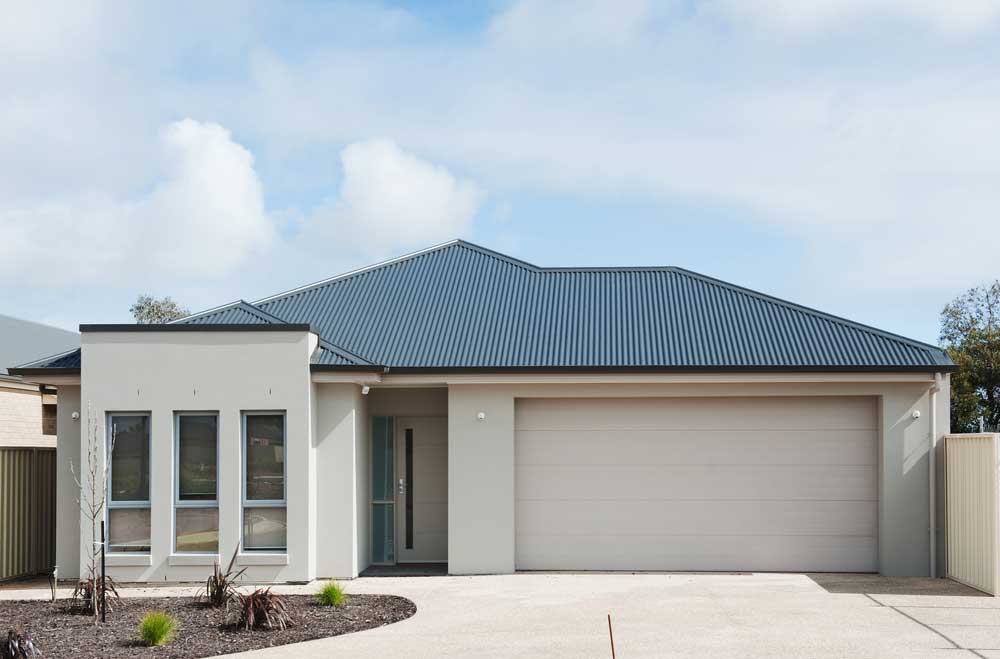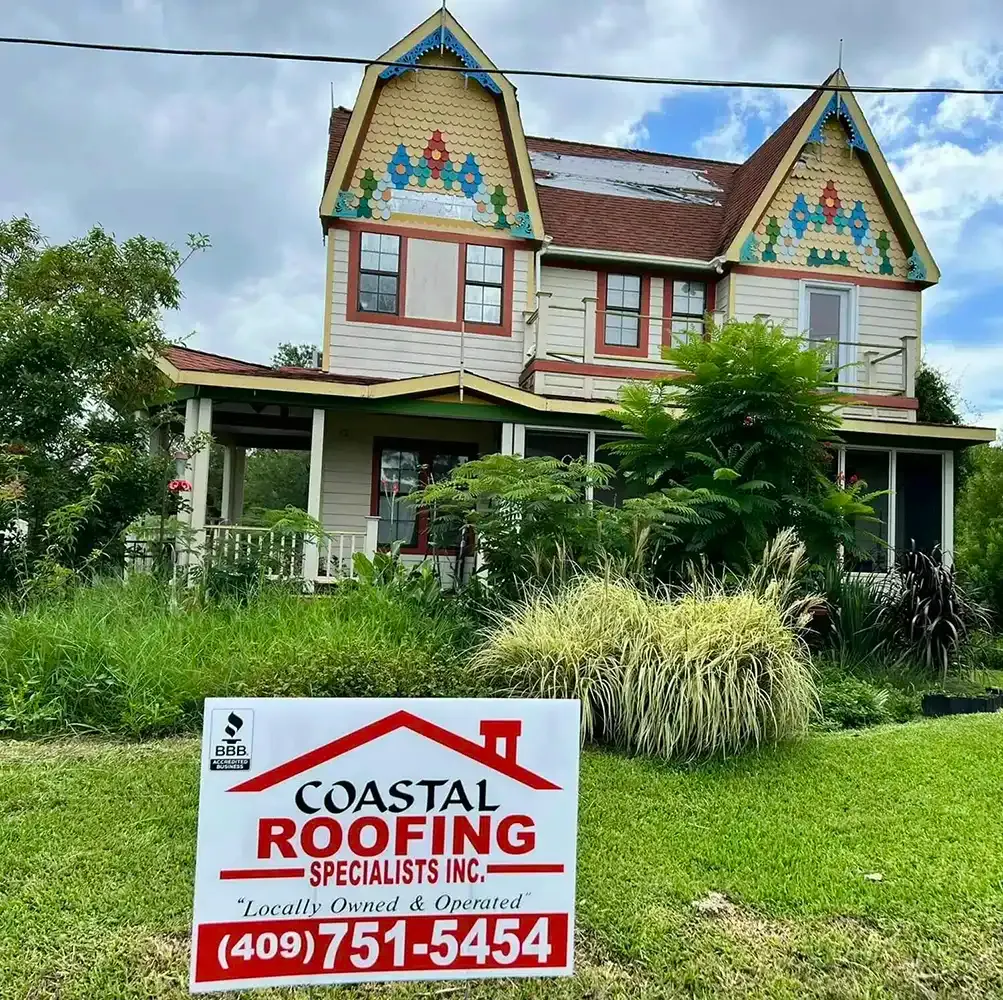Greenest Roofing Material: 3 Eco-Friendly Options for Your Home
July 25, 2025
•
Written By
Coastal Roofing Specialist LLC

In Texas, where the sun’s no stranger and storms can sneak up fast, your roof isn’t just a cover, it’s your home’s shield. And more than ever, folks are thinking about how that shield impacts the environment. Choosing the greenest roofing material means investing in something built to last, that works with nature, not against it.
What you’ll find in this guide:
- What makes a roofing material “green” and why it matters
- The top eco-friendly roofing options (and how they hold up in Texas)
- How to weigh cost, performance, and purpose
- Steps to find the right fit for your home and your values
Want a roof that does more than just sit pretty? Schedule a free inspection with Coastal Roofing Specialist LLC and let’s build something good, together.
What Makes a Roofing Material “Green”?
The greenest roofing material is one that’s as kind to the planet as it is tough on storms. We’re talking about materials that:
- Come from recycled or renewable sources
- Reflect heat or hold it in (depending on the season)
- Last a long time, so you’re not replacing them every 15 years
- Can be recycled or repurposed when their job is done
- Won’t dump chemicals into your rainwater or soil
It’s about building smart. Choosing something that helps your home breathe easier, while lowering your bills and your footprint. In Texas, it also needs to handle serious heat and the kind of winds that knock fences sideways.
What You Need To Consider Before Choosing
Before you dive into the pros and cons of metal vs. tile or recycled vs. living systems, take a step back. Choosing the greenest roofing material isn’t just about checking boxes; it’s about finding the one that fits your home, your goals, and how you live.
Here are a few key things to think through.
Upfront vs. Long-Term Costs
Think about your timeline. Are you hoping to move in five years, or are you putting down roots for good? Some green roofing materials, like metal or tile, cost more upfront but pay off in lower energy bills and fewer replacements down the line. Others, like recycled shingles or cool roof coatings, are budget-friendly at install but may need more attention or earlier replacement.
The bottom line? Don’t just look at the price tag; look at the lifetime value.
Your Roof’s Slope and Structure
Not every green roof works on every house. Flat roofs, for instance, may be perfect for a living green roof but not ideal for tile. Heavy materials like clay or concrete may require structural reinforcement. It’s important to know what your home can handle before you commit.
If your roof has unique angles, dormers, or drainage quirks, that’s something a qualified roofer (like us) can evaluate for you.
Texas Weather
We don’t need to tell you, Texas weather plays by its own rules. Between triple-digit temps, hailstorms, and hurricane-force winds, you need a roof that’s built to hold its ground. That might mean choosing a highly reflective material, one that resists cracking under heat, or something tough enough to shed hail and debris without damage.
In short: durability isn’t a luxury, it’s a must.
The Look You Love
Going green doesn’t mean you have to give up on curb appeal. From sleek standing seam metal roofs to rustic reclaimed shingles or clay tiles with that classic Southwest charm, there’s something out there that fits your style. Your roof should reflect both your taste and your values.
So whether you’re drawn to modern farmhouse, Spanish mission, or simple and functional, you’ve got options.
Maintenance Level
Let’s be real, some green roofing materials are more hands-off than others. Metal roofs, for example, don’t need much upkeep. Living green roofs? They’re gorgeous, but they need care like a garden. If you’re not up for routine maintenance or inspections, that should factor into your choice.
Ask yourself: Do I want a low-maintenance system I can mostly forget about, or do I enjoy the idea of being more involved?
Still not sure what’s best for your home? That’s exactly where we come in. At Coastal Roofing Specialist LLC, we take the time to understand your goals, your home’s needs, and your budget. Whether you’re looking to reduce energy use, lower your footprint, or just build something that lasts, we’ll help you find the roofing material that checks every box.
Schedule your free inspection and let’s start planning your next step.
What Are the Top 3 Eco-Friendly Roofing Materials?
Choosing the greenest roofing material doesn’t mean sacrificing quality, beauty, or strength. In fact, some of the most sustainable options are also some of the most dependable, especially in a place like Texas, where roofs take a beating. Let’s walk through the top three eco-friendly roofing materials that bring together good looks, durability, and a smaller footprint.
1. Metal Roofing
Why it’s green: Metal is one of the most recyclable materials on earth. Many metal roofs are made from recycled steel or aluminum and can be recycled again when their job is done. They also reflect sunlight, which keeps your home cooler and cuts down on energy use.
Why it works in Texas: With our blazing summers and strong winds, metal stands its ground. It’s especially popular across Texas neighborhoods where high heat and hail can wear out traditional shingles fast.
Popular types:
- Steel Roofing
- Corrugated Metal Roofing
- Standing-Seam Metal Roofing
- Exposed Fastener Metal Roofing
Pros:
- Reflects solar heat and lowers cooling bills
- Extremely long-lasting (40–70+ years)
- Compatible with solar panels
- Lightweight and fire-resistant
Cons:
- Higher upfront cost than asphalt
- Can be noisy during rain or hail (though insulation helps)
2. Clay & Concrete Tiles
Why it’s green: These roofing tiles are made from natural materials like clay or sand and cement. They’re built to last for decades, which means fewer replacements and less landfill waste. They also offer excellent thermal performance, keeping your home cooler inside without relying as much on air conditioning.
Why it works in Texas: Clay and concrete tiles are right at home here. They’re heat-tough, storm-tough, and they just happen to look great on homes with Spanish or Mediterranean-inspired design.
Popular types:
- Concrete Tile Roofing
- Synthetic Tile Roofing
Pros:
- Life expectancy of 50–100 years
- Natural insulation reduces energy use
- Fire- and wind-resistant
- Recyclable at end-of-life
Cons:
- Heavier than other roofing materials, may require extra structural support
- Installation cost is higher than traditional shingles
3. Cedar Shingle Roofing
Why it’s green: Cedar shingles come from renewable wood sources and, when harvested responsibly, are a great natural roofing option. They're also biodegradable and can be turned into mulch or compost at the end of their life.
Why it works in Texas: Cedar offers natural insulation, keeping homes cooler in the summer and warmer in the winter. It’s also surprisingly resilient when installed and maintained correctly, though it performs best in areas with good ventilation and lower humidity.
Pros:
- Natural, rustic aesthetic
- Insulating properties help control energy costs
- Lightweight and renewable
- Can be recycled or composted
Cons:
- Requires more maintenance than tile or metal
- Susceptible to mold and rot if not sealed properly in humid climates
Each of these roofing materials brings something a little different to the table. Whether you're drawn to the clean lines of standing-seam metal, the timeless texture of clay tile, or the warmth of natural cedar, there’s a sustainable option that fits your style, your budget, and your long-term goals.
Not sure which one is right for your home? Schedule your free inspection with Coastal Roofing Specialist LLC, and we’ll help you find the perfect fit, one that’s built to last and built with care.
Texas Homeowner’s Green Roofing Checklist
- Confirm roof slope and structure
- Weigh long-term savings vs. upfront cost
- Choose reflective or insulating materials
- Check for local rebates or tax credits
- Talk to a pro about wind, heat, and storm resistance
- Ask about installation timelines and warranties
- Schedule a free inspection to review your options
Texas Eco-Roofing FAQs
What Is The Greenest Roofing Material Available?
One of the greenest roofing materials available is metal roofing. It’s often the best all-around choice; it’s recyclable, long-lasting, and energy-efficient.
Can A Green Roof Really Lower My Energy Bill?
Yes, a green roof really can lower your energy bill. Materials like metal, tile, and cool roofs reduce heat absorption and lighten your A/C load.
Are There Rebates For Eco-Roofs In Texas?
There are sometimes rebates for eco-roofs in Texas. Certain Energy Star and reflective systems may qualify for local or federal incentives.
Do Green Roofs Work Well During Texas Storms?
Green roofs often work well during Texas storms. Metal and tile perform exceptionally well. Green/living roofs need strong drainage and professional design.
Can I Pair A Green Roof With Solar?
You absolutely can pair a green roof with solar. Metal roofs, in particular, are a great base for solar panels.
Build Something Better, Together
Choosing the greenest roofing material isn’t about being trendy. It’s about building something that lasts. Something that keeps your family safe, saves energy, and gives back to the land beneath your feet.
At Coastal Roofing Specialist LLC, we’re here to guide you, not just to the right roof, but to the one that fits your values, your climate, and your future. We're certified, local, and ready to help you make the kind of investment that feels good today, and even better tomorrow.
Schedule your free inspection and let’s talk about how to build a better, greener roof, together.
Recent Articles

Residential Fencing
Installing a Fence on a Slope: Overcoming Challenges
Learn smart tips for installing a fence on a slope. Explore step-down, racked, and terraced solutions. Schedule your free inspection today!
August 26, 2025

Residential Roofing
Roofer Reviews Near Me: Finding a Trusted Professional
Need a roofer you can trust? Learn how to read roofer reviews near me, spot red flags, and find the right fit. Schedule your free inspection.
August 20, 2025

Residential Roofing
Roof Repair to Keep Animals Out: Preventing Unwanted Guests
Learn how to prevent animals in your attic with roof repair tips that block entry points, protect vents, and keep your home safe year-round.
August 14, 2025

Residential Roofing
Questions to Ask a Roofer: Ensuring a Successful Project
Know what to ask before hiring a roofer. This guide covers smart questions, red flags, and how to choose a contractor you can trust in Texas.
August 5, 2025
.png)